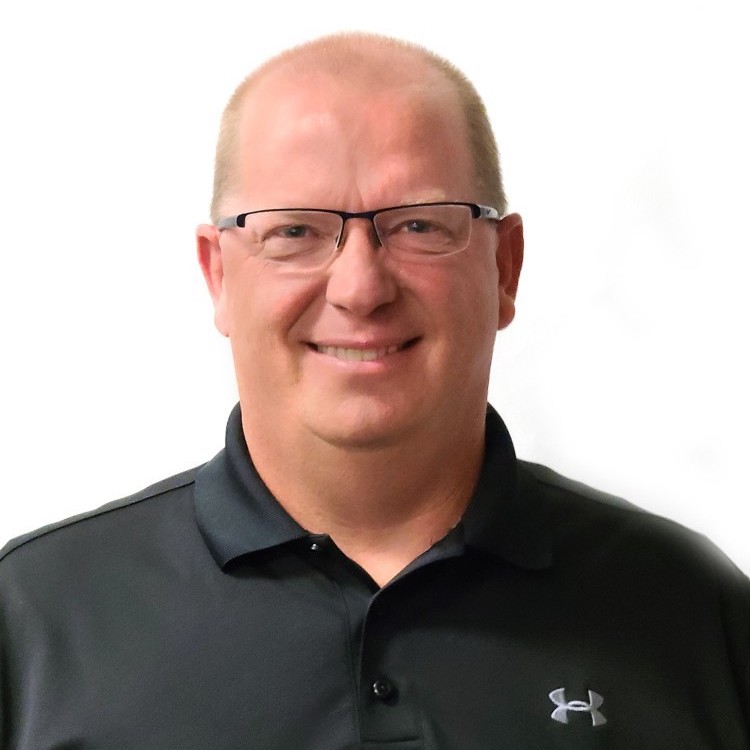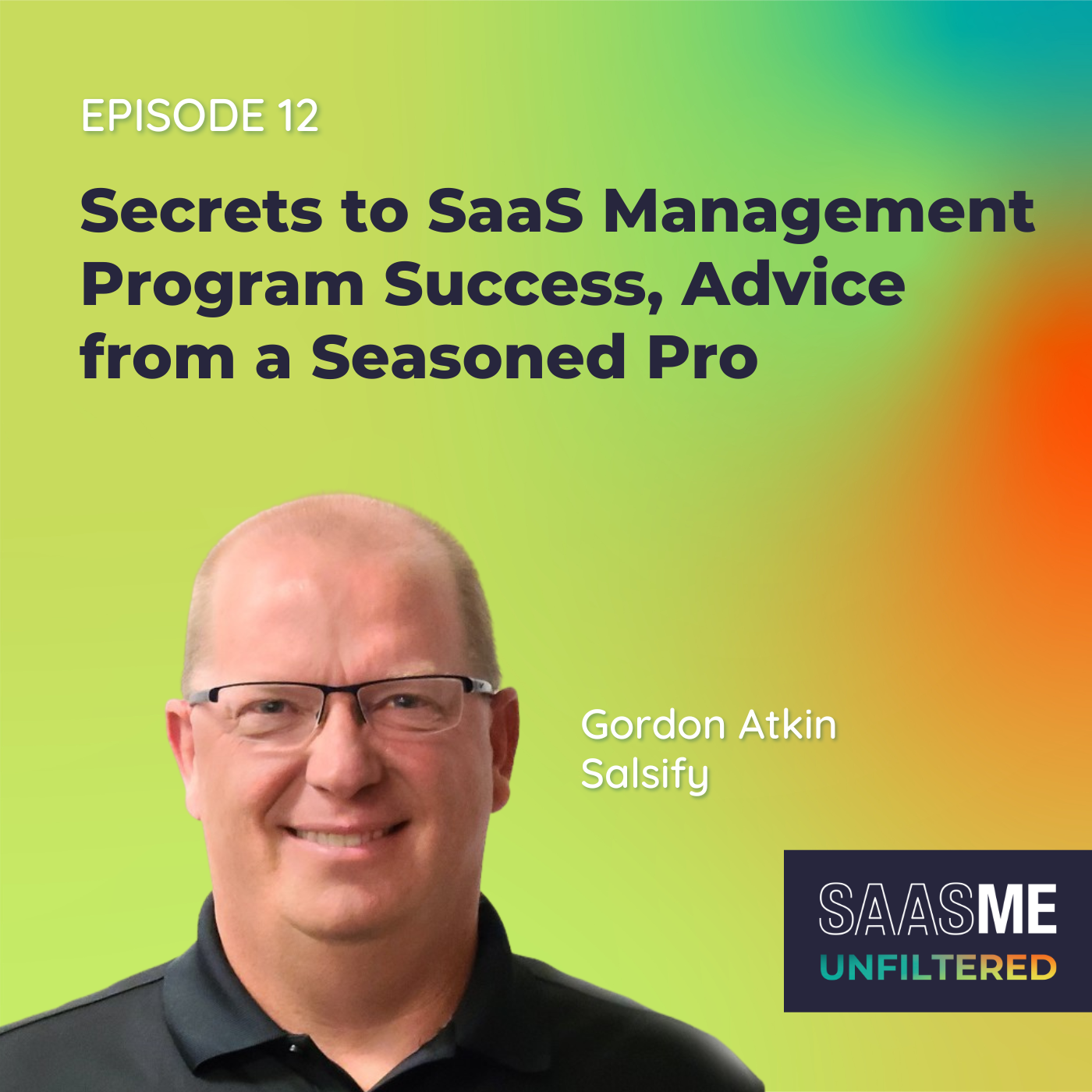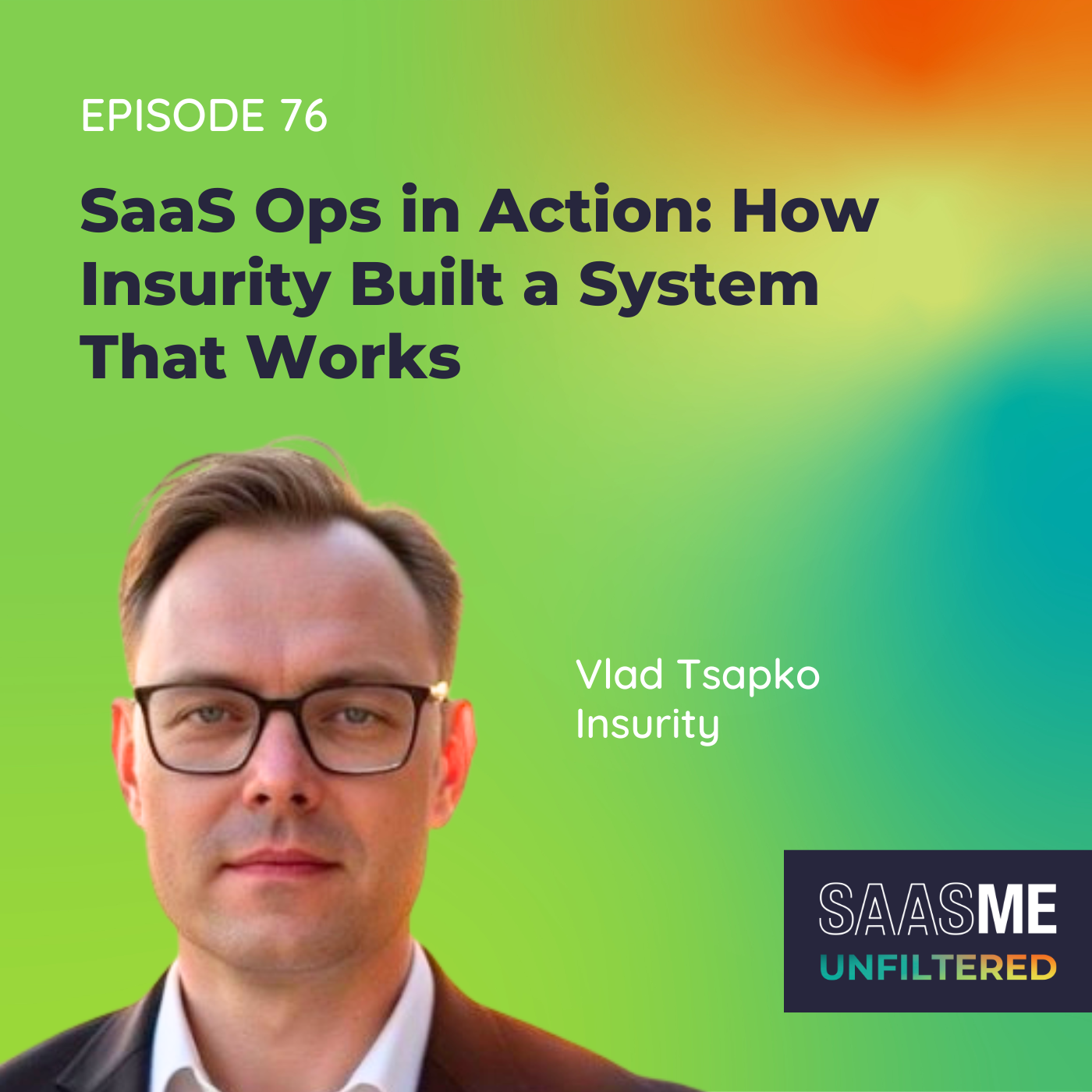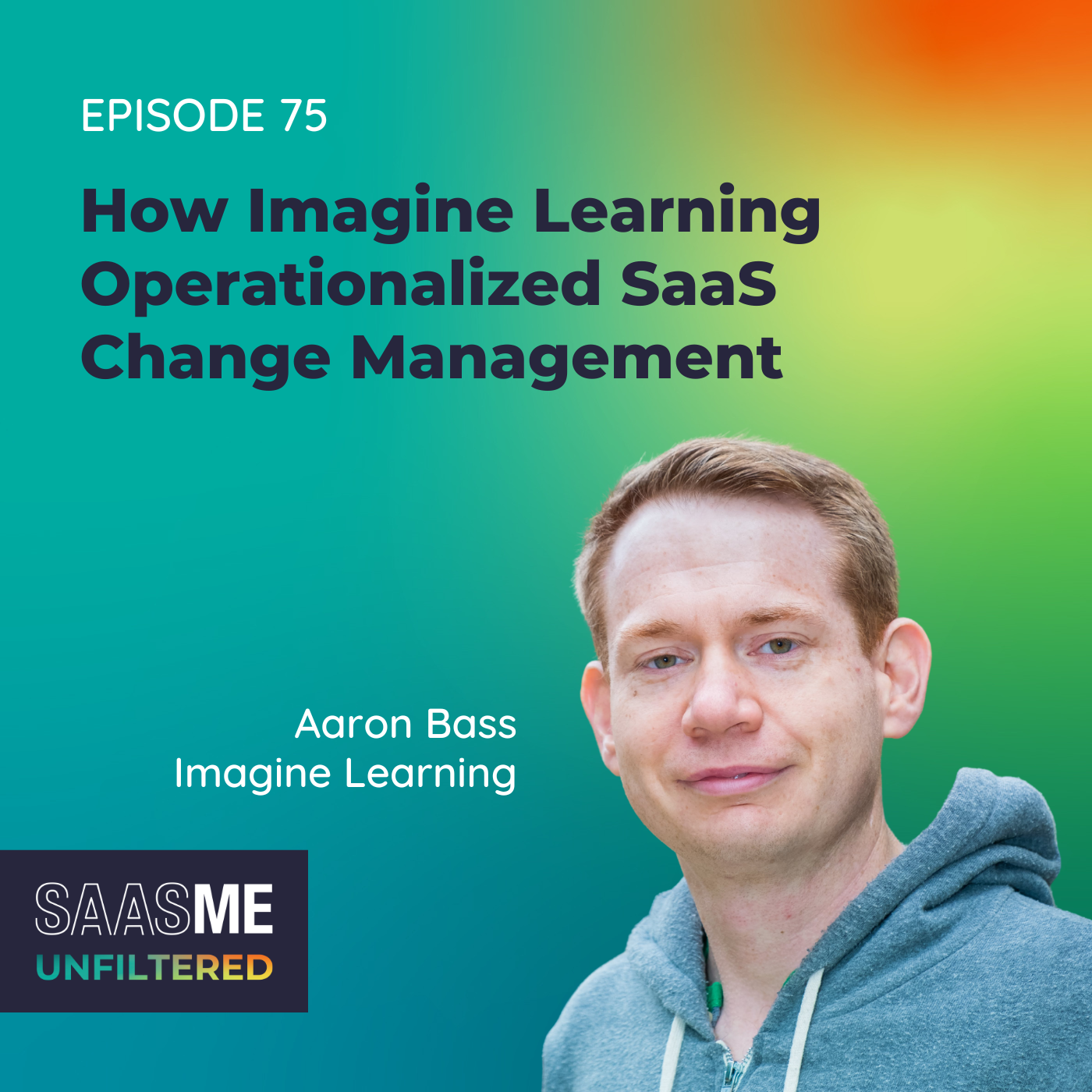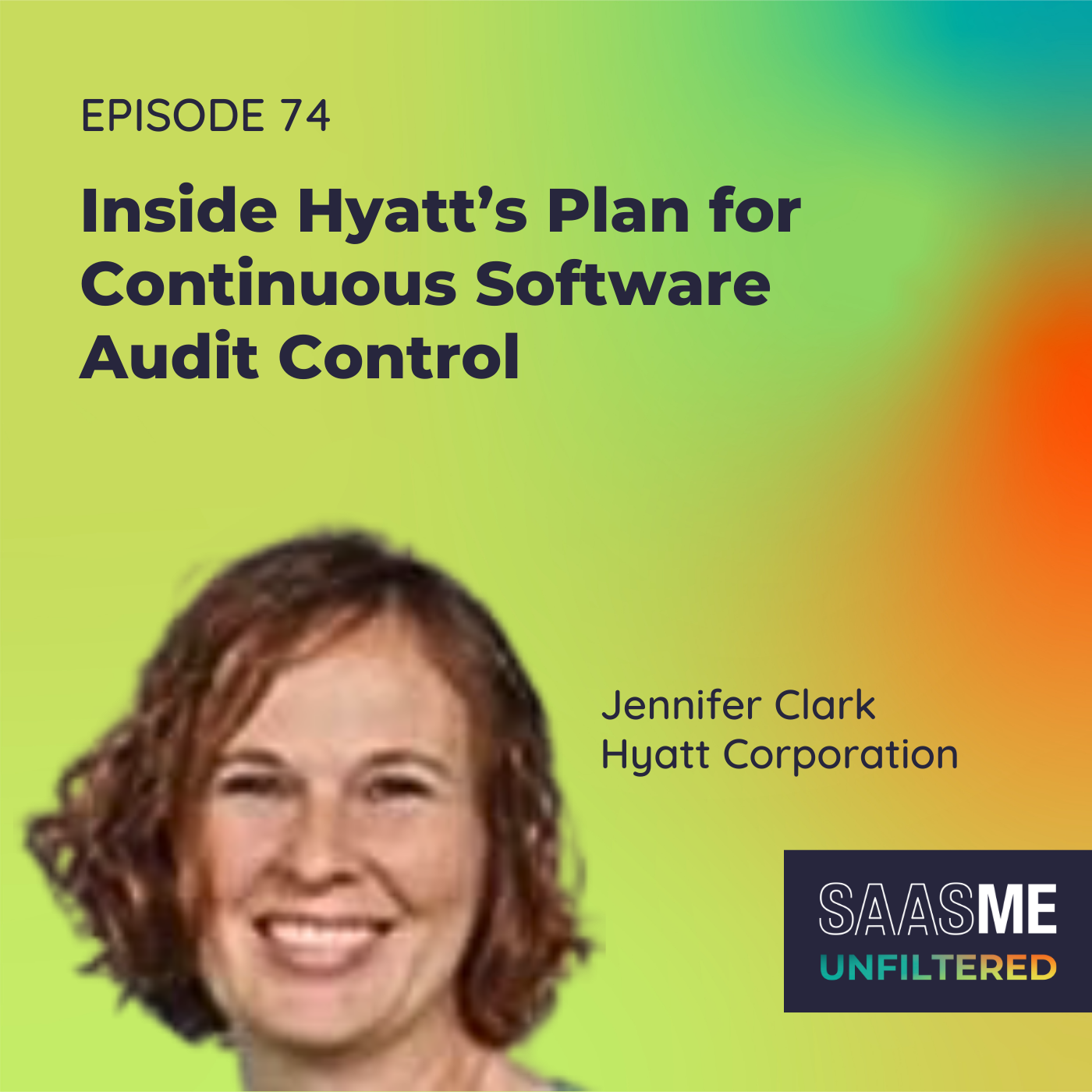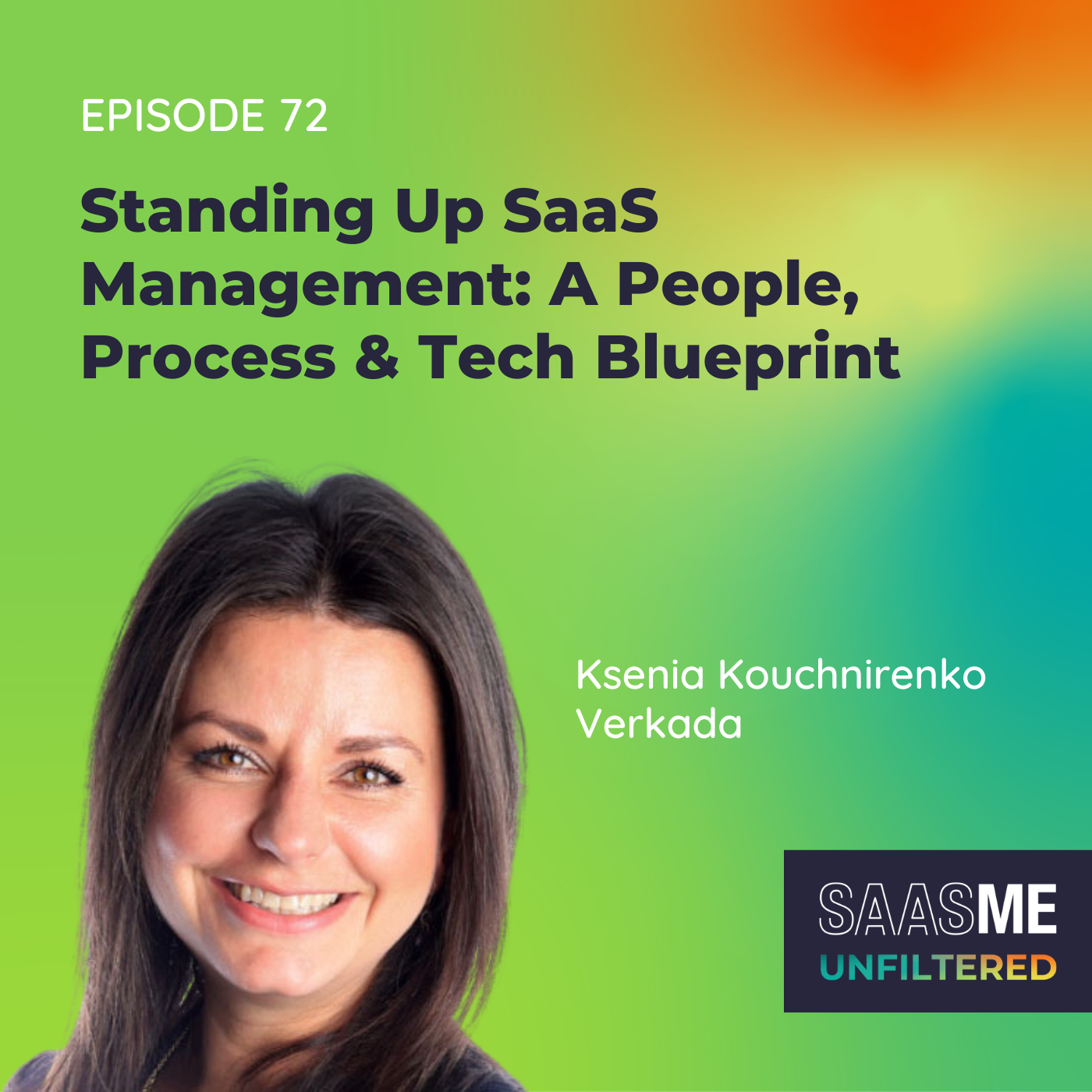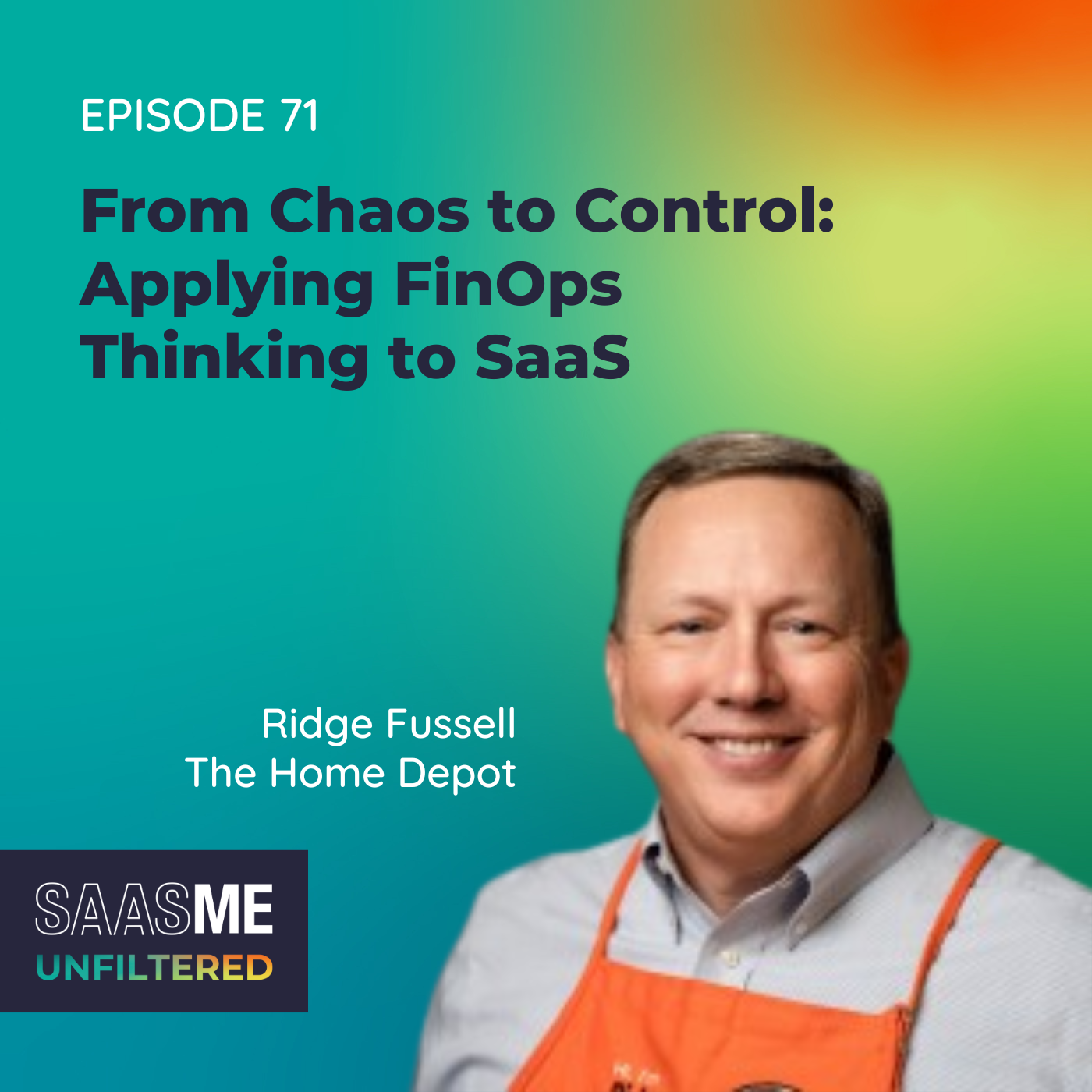Gordon Atkin: Secrets to SaaS Management Program Success, Advice from a Seasoned Pro
- 0.5
- 1
- 1.25
- 1.5
- 1.75
- 2
Gordon Atkin: You look at tooling from must- have/ need- to- have/ nice- to- have perspective, right? To me, SaaS management is a must have. The reason why I believe that, again, going back to leaning on the metric, right, it's the number two spend in especially SaaS companies, right? For more traditional legacy or on- premise companies, it's going to be a cost that continues to creep up, and traditional software asset- tracking solutions aren't going to help you manage SaaS.
Cory Wheeler: Hello, hello and welcome to SaaSMe Unfiltered: The SaaS Management Podcast, the show with give- it- to- you- straight, real- life advice from pros knee- deep and SaaS every single day, SaaS management superheroes just like you. We are back for another episode of SaasMe Unfiltered. Really excited to have you join us in the first episode of our second season. I'm Cory Wheeler, chief customer officer at Zylo.
Ashley Hickman: And I'm Ashley Hickman, Manager of customer success at Zylo.
Cory Wheeler: We are very excited to welcome a special guest with us today. This guest has an extensive IT background, began his career in consulting at Oracle, which really gave him that breadth of experience that's really needed to step into a CIO role. He saw how large ERP implementations handle a lot of internal challenges at his companies and built solutions around problems. From there, he moved into IT. Leadership in software as a service, was at ancestry. com, fusion. io, and others. Most importantly to us on the show, of course, is that he is a two- time Zylo customer, most notably at Instructure, where he was our ninth- ever customer, so he holds a very special place in all of our hearts. But he led IT at Instructure, taking on IT and systems, growing into that CIO capacity where now he has built and led IT organizations from the ground up. Currently, he is at Salsify, leading technology and business platforms. He resides in Salt Lake City, Utah, has a passion for all things Italy, which I know he shares with my co- host Ashley, and he is an avid bagpiper, which is so awesome. Welcome to the show, Gordon Atkin.
Gordon Atkin: Thanks, Cory. Thank you for the introduction. I'm happy to be here. You did a great job of introducing me. Thank you so much.
Cory Wheeler: We like to gas up the folks that we have on the show. It's a special episode having you on. We've had a fantastic relationship going back over six years. You are one of those early entrance and early adopters of SaaS management, so we're going to dive into a lot of content around that. Now, before we jump into the interview, we'd love to get your take on something. We're calling this Segment Hot Takes with Tom. Our colleague Thom McCorkle is going to share a Zylo point of view and we'd love for you to tell us what you think, whether you agree or disagree, and why. Are you ready?
Gordon Atkin: I am.
Cory Wheeler: Okay.
Thom McCorkle: Hey, everyone. Welcome to Hot Takes with Tom, a give- it- to- you- straight point of view on SaaS management and optimization. Doesn't matter what your business is, every company needs to be managing SaaS, and here's four reasons why. On- prem is going to the cloud, and if your company started in the last 20 years, you're likely already SaaS forward. If you aren't managing that, you're already behind. SaaS is your second top- line item next to employees and it's very easy to overspend. Zylo finds that companies are overspending by about 15% across their whole portfolio. SaaS is one of the greatest areas of risk with some of the lowest levels of visibility. 77% of SaaS spend and ownership is happening outside of IT and IT can't manage what they can't see. Finally, your SaaS landscape is changing every single day. That makes it hard to keep up with the likely eight new apps entering your environment every single month, so I ask, if you aren't managing SaaS today, why?
Gordon Atkin: Most of my experience has been working in SaaS companies, especially in the past 10 years, and so I can't imagine why you wouldn't want to have a program around managing SaaS spend. In fact, even most recently as two days ago, I was talking with our head of FP& A, and we were talking specifically around how do we implement a SaaS management program. It is, as you said, the top expense in our company next to payroll and headcount costs, right, and so you have to really take an approach that's evaluating that cost, and the processes around managing that cost. If you're not managing that cost, then that tells me that either you don't really have a lot of SaaS spend, or you don't understand the space, and you don't really have a full understanding of the landscape of SaaS within your organization, so I can imagine that some companies who are very legacy/ on- prem- driven may not have that need as much as companies like us who are born native in the cloud, and live in the cloud day- to- day, but I would say more and more it's going to be something that you have to pay attention to, without question.
Ashley Hickman: Gordon, Cory gave a great introduction of your experience really in the CIO landscape. You've had the opportunity to grow into that role at Instructure and have since been working with a lot of companies in that capacity and something that you've done and I think is very unique to the people that we've had on thus far is you've had the opportunity to take three different organizations public go through that IPO process, so I would love to hear in what needs to happen in an IT organization as a CIO when you are going through that. When you're about to take a company public, what's your playbook? What does that process look like?
Gordon Atkin: Yeah, I really kind of boil it down to a few different buckets. One of the big buckets is process and control, making sure that we've got the right processes in place and that we're giving our auditors comfort around our change control practices. In the first IPO that I went through, which was with ancestry. com, it was the learning experience for me, for sure. I was kind of boots on the ground at that point in time. I was a senior manager role responsible for the financial systems and that was my first experience to know how much an auditor pays attention to the tech stack that you're using that's reporting financial numbers, and so they pay very, very close attention to not just what are the processes that the finance team is doing, but what is the technical team doing? Are there proper segregation of duties? Do you have the processes to manage changes and give some reliability on the financial numbers that are being reported? That's one of the buckets is making sure that you've got process and control in place. Access and change management is another big bucket, making sure that, again, back to segregation of duties, that there is a very clear line of responsibility between who does what and how they do it. Well, I guess at my third IPO with Instructure, we paid a lot of attention to this category because we had a smaller IT team, and so there were a lot of people who were making the changes and promoting the changes into production, whereas an auditor wants to see someone who develops the change and then someone else who promotes the change to production, right? Through that exercise, what we were able to do and understand is that there's actually segregation of duties is important and making sure that who has access to do what is important, but one of the things that we learned in there was like what we call" post- audit validations." when you have a smaller team, you can implement post- production audits, so to speak, validations so that when that change to production is deployed, the auditor can see that you're actually doing a review of that code because the person who developed it also deployed it, and you want to make sure there's control around that change, and that it's actually working as designed, so access and change management becomes really, really important to an auditor. You've got to have strict policies around that. You've got to have things tied to Okta and to onboarding and offboard and terminating access, all of those processes that people view as like," Hey, we need to have a good onboarding experience and a good offboarding experience for our employees." When you're a public company, those are real, very key controls that an auditor wants to make sure that you have something solid in place. Then I think the third bucket really is going to be around how are you going to manage the growth of your environment and making sure that you've got a strategy that is aligned to the executive strategy. Auditors do care about is their alignment from the top to the bottom around an IT strategy, right, and how you're going to grow that strategy over time, and so they want to make sure that you've got a strategy that's connected to at the highest level, and so making sure that you've got steering committees, that you've got things that really connect your vision to the overall company vision is what I would say are some of the key lessons that I learned going through HIPO.
Cory Wheeler: Yeah, that's awesome. Going through each IPO, you've been on IT leader/ CIO in several organizations now, and this gives you a unique perspective on companies that you're coming into, initiatives that you're implementing. What is your, as you think about it, and you're in, sorry, yeah, your third month at Salsify, what's that three/ six/ nine- month playbook that you run that allows you to be an effective fast- moving CIO in these organizations?
Gordon Atkin: Yeah, I really rely on Gartner's playbook, to be honest. And I've relied on it ever since I've gotten introduced to Gartner's playbook back when I was at Instructure in the mid- 2010s, I guess is how we refer to it now, and one of the key parts of Gartner's model is really looking at and evaluating where are you, where does the company want you to be From an operating model perspective. There's five levels that you can be from an operating model perspective. You can be a" Hey, let's keep the lights on" type of business. Let's protect the company, let's make sure that employees are getting their laptops, that they're secure, and that we're just running the business effectively. We're not doing major changes, or dramatic changes. That requires a different level of staffing and strategy than if you want to grow, enhance, or transform the business, right?
Cory Wheeler: Right.
Gordon Atkin: So, really, you have to align where does the company want you to be, and based off of where you want, whether they want you to be, right, if they want you to be in that grown enhanced phase, then that's a different staffing model, that's a entirely different operating model than even an" Let's transform the business, let's be very transformative from an IT perspective," so I use that model, and I really try to make sure that we've got the right people in the right seats first and foremost, that people are actually running, can actually do the job that you need them to do depending where you're going to be at in that model.
Cory Wheeler: I love that. Maybe a quick follow- up, how does that relate to tooling inside the enterprise? Maybe even before that, no matter what stage you're in, run, enhanced, grow, innovate, or what strategies you're implementing, where does budgeting play into that? It's got to be a large component, but how does that interact with your strategies? How does that interact with your CFO as you're looking to implement? Then maybe secondarily, then how do you start looking at tooling from there?
Gordon Atkin: Yeah, so the person who cares most about it in the organization is typically the IT leader, and the person who cares second most about it is the CFO, no question, hands down.
Cory Wheeler: I love it.
Gordon Atkin: The CFO is usually driven by budget and cost, right, making sure that we're spending effectively. I've had some CFOs that I've worked for who are really good at knowing and understanding the investment that it requires to support and grow and make IT a really good part of the business. I've had other CFOs where it's just like it's a cost center, manage it as narrowly as you possibly can, and so budgeting is always in the conversation. How strict are the rules around budgeting depends on the CFO's philosophy and it depends on the phase of the company. If you're in a high- growth company, most CFOs are going to be a little more lenient in terms of how they want to grow and budget for what it is doing, and if you're more mature phase where metrics matter rule of 40 and things like that, then they're going to tighten down the screw so to speak and say let's manage it more effectively. That's where SaaS management really comes into play. If you're ahead of that game and actually running a SaaS management program, and I'll call it a" program"'cause I think it is a program, then the conversation of tightening down the screws with the CFO is a lot easier than it is if you're in that high- growth phase, and it's just like," Go spend, and we don't really care about what you're spending because we're trying to grow," but as an IT leader, I think that you need to have the mindset of SaaS management given that it is the number two cost in most organizations. If you spend a lot of time and effort on that bucket, I think you'll be ahead of the game when the time comes to tying down the screws.
Cory Wheeler: Yeah, I like that. It's a tactical motion on day one. You've always mentioned that. It's why when you've landed at new spots, we always have early conversations.
Gordon Atkin: Yeah.
Ashley Hickman: As you mentioned SaaS management, that's really a program, something that you're looking to establish, so for you, what is your definition, or your perspective on what a SaaS management program is as a CIO?
Gordon Atkin: Yeah, so you've got to get your arms around the complete inventory I think is the first step you've got to have. I remember when I was at Instructure, we were going through an exercise, and it was like," Hey, how many tools do we have?" This was back in 2014 before SaaS management really became a thing, and we couldn't answer that a question very effectively, so we started putting together a spreadsheet. We put a spreadsheet together, we started listing all the applications that we knew of, we started looking at where we were spending money, and we came up with I think like 150 applications, or something like that. Then shortly into that exercises when I was introduced to Zylo, Zylo did their magic, and we found out that I think we had, I don't know, 350 applications. I mean, the number was just astonishing through that exercise to go," Wow, we really don't know what we have," and so I think you got to understand the complete inventory of what applications do you have, whether that's through your AP spend, through your expense spend, or through the credit card spend. That I think gets ignored in a lot of organizations, or even through the freemium versions of open- source software programs that are coming into the company that may or may not be known, so I'd say that's probably the first bucket that you want to look at is what do we have? Once you have that together, then I think that you need to understand total spend and utilization against that spend. Oftentimes when you're looking at, Salesforce is a good example, right, you have a hundred, 500, a thousand licenses, are you utilizing those licenses? Going back to the IPO path, auditors will require you to do reviews over who has access to key systems, right? But as a common and as a best IT practice, you should be looking at your key systems in that way, regardless of whether you're being audited, right? You should always take a look, and say," Are we having the high utilization out of these systems given the spend that we have?" You need to look at the utilization of the system, making sure that if you have a thousand licenses of whatever, that you're actually getting close to at least 95% value out of those licenses. You have to hold some in reserve because you want to be able to grow into the platform and not overspend. The other piece that I think is important that once you get more mature into that SaaS management cycle, or that program, is really understanding renewals, and making sure that you're on top of the renewals. You need to understand where you might have duplication, for example. Video conferencing I think is a prime example. You might have Zoom, you might have Microsoft Teams, you might have RingCentral, you might have all different sorts of video conferencing. Is there opportunity to consolidate? Understanding the renewal cycle of all of those applications is really important so that you can reduce and consolidate some of that spend across the organization. Then finally, I would say benchmarking is the key component there because you want to know if you're spending a million dollars on Salesforce, is that high, medium, or low compared to others that are of similar size or have a similar footprint? I would say benchmarking is a really key component of understanding and managing the overall SaaS footprints.
Ashley Hickman: I can imagine, especially having benchmarking, is probably helpful in those conversations with your CFO, so again, depending on what stage you're at and stage of a company and the ultimate goals, but I would imagine having that detail is tremendously helpful in those conversations.
Gordon Atkin: Yeah, it really is. In fact, it's one of the top questions at my current company. We don't use Zylo, but we have a practice where we're trying to implement a SaaS management program, and one of the top questions that I get is," Well, how does that compare to others, what we're spending?" So, the transparency to benchmarking is vitally important, especially when it comes to a SaaS management solution, right? We have to have clarity around... Gartner and other companies offer these services where you can say," Okay, hey, we have this huge contract, can you help us negotiate? Where should we be?" But when it comes to really being SaaS- driven, you want that built into the SaaS management platform that you're using to help you understand where you're being rather than having to go and pay for a consulting agreement. You're paying money to help you save money, which is kind of counterintuitive, in my opinion.
Ashley Hickman: Are you blown away by the amazing work our SaaSMe Unfiltered guests are doing? Now, you can join them at SaaSMe, the industry's only SaaS management event. Hear from the experts, discover trends, and learn from the pros knee- deep in this shit every single day. Register today at saasme. com. That's S-A- A- S- M- E dot com.
Cory Wheeler: Yeah, I want to follow- up, Gordon, on you've hit on it a couple of times now, you've said a" SaaS management program." It's very near and dear to our hearts. Ashley and I talk about it every single day. There is a case to be made that a program for SaaS management is really centered around an event, that magical event where driving optimization, making changes, adjustments, modifications, getting security terms in place, all of that is happening around the renewal, and a SaaS management program, the backbone is the entire renewal process, which provides enough value to be able to pay for, or be able to provide enough overall value that you're able to chase governance, and security, and employee engagement while ensuring that you're optimizing your stack internally. That happens usually most of the time at the renewal. Maybe talk a little bit of the criticality. Do you believe assess management program revolves around that event across all of your applications, or what is that high- level program definition for you?
Gordon Atkin: Yeah, I would say it's actually two events. It's intake and renewal. Intake is vitally important because most companies will have some sort of vendor intake process, but when you look at it from pure... The reason why I call it a" program" is because of how many people SaaS touches, especially upon intake and renewal. When you think about the intake process, you have procurement, you have finance, you have information security, you have IT, you have all these different parts of the organization, you have legal, you have all these people who are looking at," We're doing new business with a vendor. How do we manage this effectively?" Most companies will call it" vendor intake," but I think that that vendor intake is part of the overall SaaS management program, right, is a piece of the puzzle. When you say," We run a SaaS management program," and vendor intake is part of that, renewals is part of that, right? When a renewal comes, fewer players are involved, right? You still have IT, you still have finance, and you still have procurement. Legal is less involved because we've typically agreed to the terms and conditions with the organization, but you still have to manage that collectively. Procurement doesn't roll up to me, finance doesn't roll up to me, I don't roll up to them, and so to make sure that you're all on the same page, I think that you do have... I've even thought about initially calling it at something at Salsify like," Maybe we have a SaaS management committee, or rather than a program, maybe it's a committee, right," and therefore, you can start small, and then get some traction towards an overall program where it's managed more effectively.
Cory Wheeler: Yeah, I like how you've run that around the life cycle of an application, intake or the purchase, the renewal after ongoing usage. What about that last component, which is offboarding or deprecating apps? Is that a critical point for you as well?
Gordon Atkin: For sure, yeah, and I do think that that is something, even in my own experience that is something that has forgotten, right? We don't offboard vendors in the right way, right? You have to think about privacy, you have to get rid of data, you have to make sure that you have evidence that your information has been cleansed from the SaaS provider, so to speak, so that certainly does fall into the... I would say that that piece less procurement and more IT and more information and security in terms of running that program effectively.
Cory Wheeler: Yeah.
Ashley Hickman: Awesome. You've had a lot of experience, like you mentioned when you were charged at Instructure with trying to figure out what are all your tools, and you started with putting everything in Excel, compiling that list, later using Zylo. You've had the opportunity to use other SaaS management platforms as well, so you have a tremendous breadth of experience with different approaches, and the way approach tooling, right, so would love to hear a little bit from your point of view, the criticality, if and where that lies for you, a little bit of a hot take.
Gordon Atkin: Yeah, I would say you look at tooling from must- have/ need- to- have/ nice- to- have perspective, right? To me, SaaS management is a must- have. The reason why I believe that, again, going back to leaning on the metric, right, it's the number two spend in especially SaaS companies. For more traditional legacy or on- premise companies, it's going to be a cost that continues to creep up, and traditional software asset- tracking solutions aren't going to help you manage that, so to me, it falls into the camp of must- have. As Cory alluded to, I've now been at three different organizations since I was first introduced to Zylo, and usually, one of my top initiatives when I start within the first 90 days is, what are we doing around SaaS management? So, it is one of those things that I really think is a must have.
Cory Wheeler: Well, that's really awesome. Gordon, all of these insights, how you think about building it strategy, preparing for IPOs, a SaaS management program, and the core tenants there are fantastic. I think you've shared a lot of insight and I think you probably have more than the average IT leader based on your experience of coming in, assessing problems, implementing a methodology, and going as quickly as possible, so thank you for that. We are going to round out the show in the best way possible that we know, which is running a fun little rapid- fire word association, so we'll hit on a couple of quick points. You associate your thoughts on that, can be a sentence, can be a single word, and we'll round it out that way. Are you ready?
Gordon Atkin: I hope so.
Cory Wheeler: All right. Give me your favorite SaaS tool, both on the personal side and on the professional and working side.
Gordon Atkin: Okay. It's easy on the personal side of it because I use it the most. It's called TheGrint. For any golfer out there, I use TheGrint all the time. That's easy.
Cory Wheeler: Well, I'll follow you so that I can see your scores.
Gordon Atkin: Oh, I don't know if you want to. On the work side of things, to be honest, I spend a lot of my time in Microsoft OneNote. I really do. The reason why I do, I love Google and I love the tasks. I use Google tasks all the time. But OneNote really helps me consolidate everything that I need to do from an overall organization perspective. With my position and the responsibilities that I have, I just have to have a way of organizing and tracking. I will say this: I do like Jira Atlassian quite a bit because it helps me understand from a program portfolio perspective what are we doing. I haven't found a better tool and so I think that it's good enough and it really helps me manage things more effectively.
Cory Wheeler: Yeah, shout- out, Atlassian. We use it internally as well.
Ashley Hickman: Also, OneNote. I'm obsessed with OneNote, so yeah, big fan, lit every day. It's always up on the right- hand monitor. Next one here, your number one skill trait that a CIO must have.
Gordon Atkin: I can't answer that in one word. Here's how I'll describe. I think successful CIOs really have a good skill around understanding the completeness of the business and developing relationships within the business to help understand where value needs to be driven from an IT perspective. That's hard for me to kind of say in one word what I think the top skill is, but I do think that developing relationships and really understanding the breadth of the business in detail, right, it's not just about understanding that there's marketing in their sales and there's manufacturing and all these things, right? In my opinion, being the CIO is the hardest job at a company because you have to understand in depth everything across the business, right, in order to support the business properly, and I don't know of any other organization that supports the business as deeply as an IT organization does.
Cory Wheeler: Good one. Okay, my turn. I can't mention in the introduction that you're an avid bagpiper and not ask a question on this, so this could be a little larger, but give me your favorite location, your favorite experience, or a neat story around your bagpiping. I think everybody will enjoy this.
Gordon Atkin: Yeah, so there's two stories for me that come to mind. The first story is when I was first part of... I play in a competition band called the Salt Lake Scots, and we go to different parts of the country to compete. One of the places that we started competing at is in a place called Moab. Most people have probably heard of Moab and the Red Rocks at Moab. If you've had an opportunity to be at Moab and go to Arches National Park, we went into Arches National Park, and we actually climbed up, not on top of the arches, but underneath some of the arches, and we would have just minor bagpipe performances.
Cory Wheeler: Incredible.
Gordon Atkin: It's super loud when you get into that setting with the red rock there and hear how, I mean, the bagpipe is a loud instrument, but when you have the echoes of the rocks behind you, it was an amazing experience. But I think my personal favorite, hopefully I won't get too emotional about this is, but my mom's buried in Scotland, so I've been able to pipe at the grave where she's buried at is probably my second favorite, or it could be my top favorite place to bagpipe.
Cory Wheeler: Yeah, I've got to imagine that. Wow. What an amazing experience. Thank you.
Gordon Atkin: Yeah, you're welcome.
Ashley Hickman: Yeah, that's amazing. We'll definitely have to see a performance sometimes, Gordon. I don't know if there's anything out there on YouTube or...
Gordon Atkin: There are.
Ashley Hickman: Oh, okay.
Gordon Atkin: Yeah, google the Salt Lake Scots. This one's a little more embarrassing. Actually, I've been featured on America's Funniest Home Videos, and there's a segment, and I'll have to forward it to you guys, but anyway, there's a segment where we're actually marching. It's called the Festival of Trees, it's a charity event that we do in Salt Lake City, and we're marching, and as we turn the corner, I fall down, flat on my back, and then I quickly get back up, and start piping again. But anyway, you can Google the Salt Lake Scots. We have plenty of features that you can listen to.
Cory Wheeler: We'll drop a link in the comments on the show as well, so check it out.
Gordon Atkin: Yep, yep.
Ashley Hickman: Nice. Well, have to ask you our last rapid- fire here, your favorite place in Italy.
Gordon Atkin: Depends on what you want, but I always fall back on Rome. I love Rome. I love the streets of Rome. I love everything about Rome. It's just such a beautiful city, easy to walk, so much history. I spent 12 months of my life there, just living in Rome. I love the Amalfi Coast, I love Sardinia. I mean, there's just so much in Italy to see, but I would say Rome is probably my favorite just because of everything it has to offer.
Ashley Hickman: Yeah, great pick. Love it.
Cory Wheeler: Great pick. Well, Gordon, we can't thank you enough both for your ongoing partnership with us. From category creation to where we're at today, you've been a critical part of that and a great strategic partner. Your insights on your journey as the CIO, how you run your playbook, how you think about SaaS management, these are all must- listen topics, so it's phenomenal to be able to have this conversation on a podcast. Thank you so much for joining us today. I look forward to talking again with you soon.
Gordon Atkin: All right. Thank you so much. I appreciate it.
Cory Wheeler: Did you enjoy the episode? Pass it along to your friends, subscribe to get notifications for the latest episode, share your favorite takeaways, and join the conversation on social media using# SaaSMeUnfiltered.
DESCRIPTION
Gordon Atkin, VP of Technology and Business Platform at Salsify, believes that having a SaaS management program is an imperative business practice. And you need a dedicated tool to do it effectively. In this episode, Gordon divulges his secrets to a successful SaaS management practice, why traditional asset management solutions just don’t work for SaaS, and what to look for in your SaaS management tool.
Today's Host

Ben Pippenger
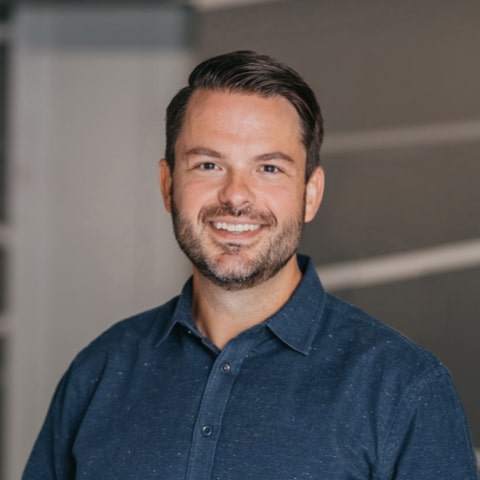
Cory Wheeler
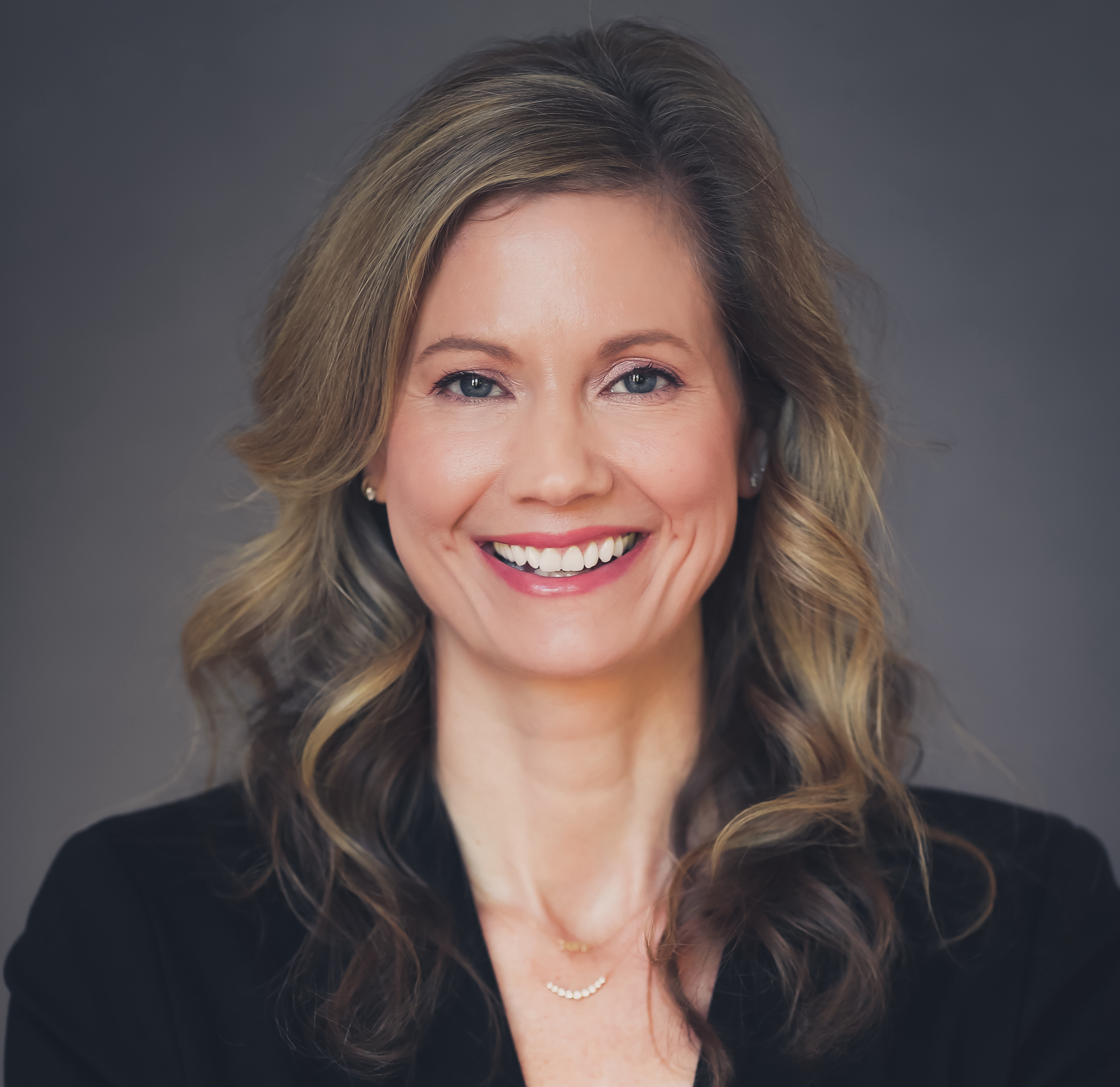
Meredith Albertson
Today's Guests
